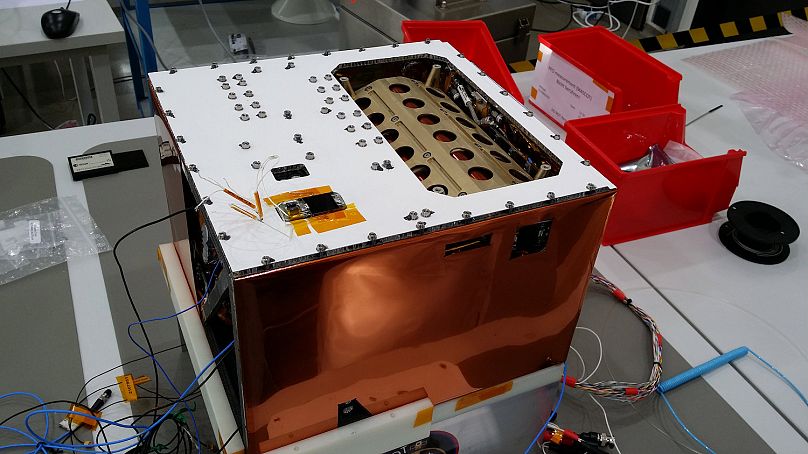The MASCOT lander departed Earth four years ago and travelled some 320 million kms.
A European-made lander tasked with extracting samples from an asteroid orbiting the Sun some 300 million km away is expected to make landfall on Wednesday.
The MASCOT lander, a small 10kg box built by the German (DLR) and French (CNES) space agencies, left Earth in December 2014 onboard the Japanese Hayabusa2 spacecraft.
On Wednesday, shortly before 4 am CEST, MASCOT is expected to separate itself from the probe and set up a few minutes later on the surface of Ryugu, a near-Earth asteroid orbiting around the Sun.
"From the first surface contact, it will be a journey into the unknown," DLR said in a statement on Monday.
Pictures sent back by two Japanese rovers which already made landfall on Ryugu on September 21 have worried European scientists because they showed that the surface was not as smooth as planned.
MASCOT will be landing in the southern hemisphere of the 950-metre long asteroid and is expected to bounce on the surface several times before settling.
"There are not very large rocks in the vicinity of the landing site, and there are numerous chunks up to 30 metres in size, which represent an additional challenge for the landing unit," the DLR explained in its statement.
Once in place, the lander will have up to 16 hours to conduct its mission before its battery runs dry.
Equipped with four instruments, it will gather data including measurements on the asteroid's mineralogy, surface temperature and magnetic field. If all goes well, scientists may have MASCOT make another jump to gather data from a second location. All the information, along with pictures, will then be sent back to Earth but will be received several days later.
Hayabusa2 reached the asteroid back in June, after travelling some 320 million km, and along with its two rovers will carry on gathering and sending data back to Earth until its scheduled return in 2020.












